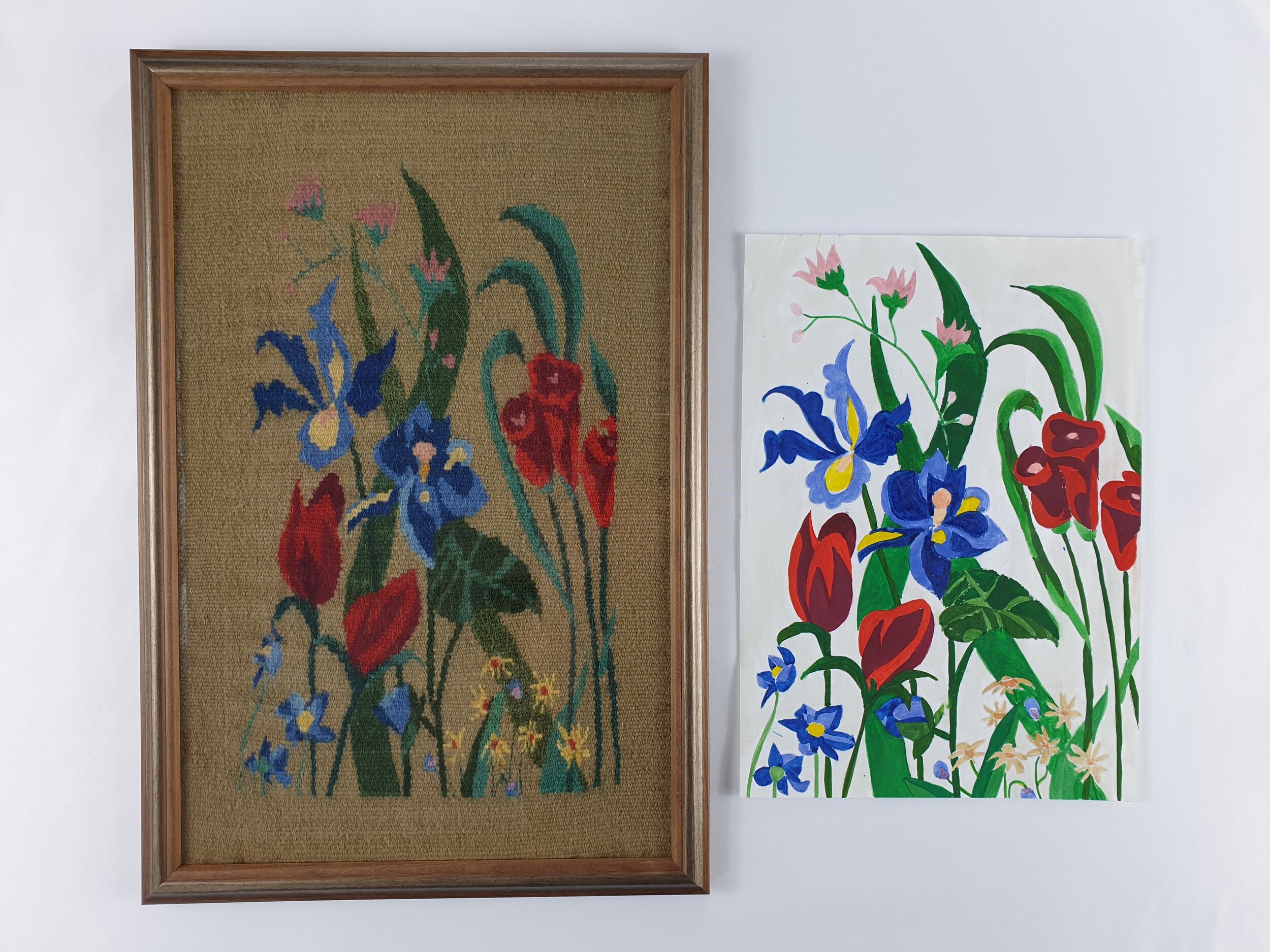The methods of weaving
Weaving is a technique of fabric production. It consists of intertwining of two separate yarns called warp and weft. Fabric is usually woven on a loom which is a device that holds the warp threads in place while weft is woven through them. However, the same result can be achieved by using a simple frame and creating the fabric by hand. There are several methods of weaving. The following 7 types of weave are the most commonly used techniques in the world. These are plain, slit, twill, sumak, pile, knotted and tapestry which give different patterns and textures of fabrics.
Plain weave
The plain weave is the process of pulling the weft thread (horizontal thread) over the first warp thread (vertical thread), then under the second, over the third, and so on until the weaver gets to the end of the warp threads. On the second pass back, the weaver is starting opposite of where they ended. To make this process quicker they can use a shed stick which is all the way across the warp threads and creates a gap between the lower and upper warp threads.
Slit weave
This is the most common weaving technique used to create geometric and diagonal patterned kilims. The slit refers to the gap left between two blocks of colour. It is created by returning the weft around the last warp in a colour area, and the weft of the adjacent colour is later returned around the adjacent warp. Weavers pack the weft tightly to completely cover the warp and often favour diagonal patterns so as to avoid weakening the structure of the rug with vertical slits. They work on one colour block before moving onto the next. It produces bold, sharp patterns that weavers enjoy creating with more freedom allowed than a plain weave. It also results in a smooth kilim that is reversible with the same pattern on both sides in most cases.
Twill weave
A twill weave is created by passing the weft thread over two or more warp threads and then repeating that pattern. The weave is characterized by its diagonal lines, which are created by an offset in the warp threads. Twill is popular because the filling and warp yarns in a twill weave do not interlace as many times as they do in a plain weave, the yarns can be packed more tightly together. This makes the fabric stronger, thicker, and better able to hide soil than a plain weave made from the same materials. It also gives the fabric a better drape and resistance to wrinkling.
Sumak weave
Although the origins of the term sumak are associated with Shemaka, a town in the Caucasus region, it no longer refers to origin, but to a general weft-wrapping practice used to create complex and varied designs. Coloured yarns are wrapped around the warps following mathematical patterns that allow the weavers to create free flowing intricate designs that form reliefs on the surface of the work. Because it is a time-consuming technique, it is commonly alternated with thin plain-weaved wefts and often used for smaller works such as bags, prayer sheets and mats.
Pile weave
The pile weave creates woven loops by using a pick-up stick to help to get a uniform loop length. The weft that crosses over the warp is wrapped around the stick and then pulled down to the support row. While the loops are on the pick-up stick, another plain weave row is woven to secure it. It is an excellent technique to add texture to the weave and define dimensional difference on its surface.
Knotted-pile technique
In the Ghiordes knot, the coloured weft yarn passes over the two warp yarns and is pulled through between them and then cut to form the pile. The knot has a symmetrical structure. The Ghiordes knot used in the oldest surviving pile carpets.
Tapestry weave
Tapestry is one of the oldest forms of woven textile. The tapestry technique differs from other forms of patterned weaving in that most weft threads are not carried the full width of the fabric web, except by an occasional intention of design. Each unit of the pattern or the background is woven with a weft of the required colour according to the design. Weavers traditionally work from a design known as a cartoon. This is a paper at full scale and either attached to the loom and hung behind it or it is placed underneath the warps. Tapestry weaving is an extremely labour-intensive process. Weaving just one square metre of coarse tapestry could be months of work for one person.







